6 Nights / 7 Days
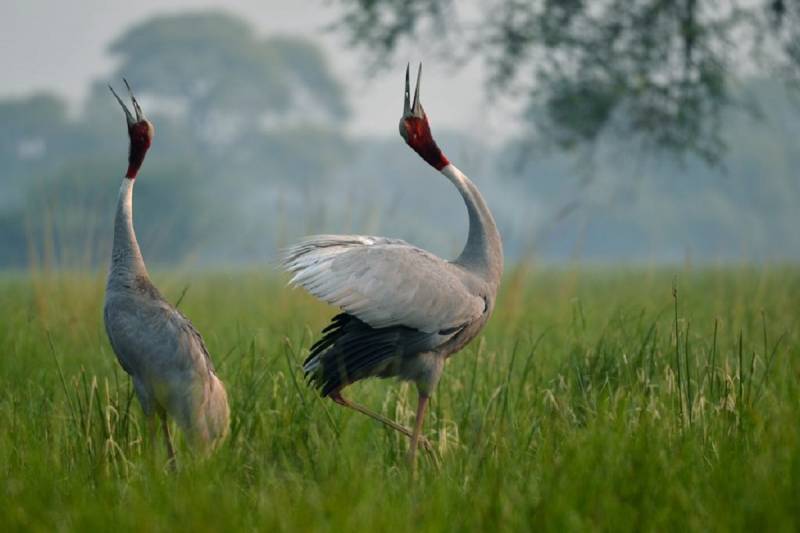
On arrival met at the airport and transfer to the hotel, Overnight stay at hotel.
Monring after an early breakfast we will take you to okhala Barrage, one of the best bird watching sites in urban Delhi. Here on the exposed mud flats one can expect to see a variety of water birds and waders including Little Cormorant, Brown-headed Gull, Black-bellied Tern, Pond Heron, Red-wattled Lapwing, Black-winged Stilt, Avocet, White-breasted Kingfisher and many other characteristics Indian species. Great clouds of Black Kites wheel over the city in the afternoon thermals and various other raptors drift across the sky although sadly the once abundant White-backed Vultures are now very scarce following a mysterious viral disease that has severely depleted their numbers. Passerines around the Okhla barrage might include several shrike species, Citrine Wagtails, Paddy field Pipits, mynas and possibly a few warblers in the bushes. Okhla is a fine place to gain an introduction to the Indian avifauna and May even provide a few rarer surprises or perhaps the very local White-tailed Stonechat and Striated Babbler, two Gangetic specialties. Later you will be transferred to Nizzamudin Railway station time to catch your train for Bharatpur. ON arrival met at station and transfer to the Bharatpur Forest Lodge, the only birding lodge inside the Bharatpur Bird Sanctauy. Evening free Overnight stay at birding lodge.
Bharatpur Bird Sanctaury is arguably the finest bird sanctuary in the world. Formerly a shooting preserve of the Rajput Maharajahs of Bharatpur, it is just 29 sq. km. in extent but holds a remarkable diversity of habitats.
The Keoladeo Ghana National Park or Bharatpur Bird Sanctuary lies between two of India's most historic cities, Agra and Jaipur. This north Indian sanctuary is situated in the country's northwestern state of Rajasthan, about 190 km from the national capital of Delhi. The name Keoladeo is derived from the name of an ancient Hindu temple devoted to Lord Shiva in the sanctuary central zone while the Hindi term 'Ghana' implies dense, thick areas of forest cover. Amongst these will be an unequalled array of wetland species, a great variety of vultures, eagles and owls, plus numerous small landbirds. As well as birds, the park has an excellent variety of wild mammals; Nilgai (blue bull), Sambar and Spotted Deer, Bird, Bharatpur India Bird Watching TourRhesus Macaque, Wild Boar, Asiatic Jackal, Smooth Indian Otter and two species of mongoose are all common, and this is one of the few places in India where the rare Fishing Cat may be seen. At night the howling of the Jackals lends a chill to the warmest of evenings and a variety of nocturnal creatures begin their foraging including a number of Indian Porcupines. Keoladeo Ghana National Park is a stunning birdwatching locality that ranks alongside the best in the world. Amazingly compact, it provides the kind of spectacle that almost defies description. The flooded jheels ensure sheltered feeding and refuge for countless thousands of geese, ducks, storks, herons and waders. Many of the storks, herons and egrets begin to nest during the monsoon rains that extend into September and with a protracted breeding season it is usual to see much activity around the treetop colonies until well into February.
The only Crane to nest at Bharatpur is the impressively huge Sarus, long afforded protection in India as a sacred bird, but their powerful trumpeting cries are not the only crane calls to sound across the marshes as flocks of Common Cranes take advantage of the reserve during the winter months and are sometimes joined by a few Demoiselle. The magnificent Siberian White Crane was formerly a regular sight at Keoladeo but despite being afforded complete protection during their winter sojourn, these conspicuous birds have been severely depleted by shooting during their long migration and these days are only irregular visitors. Painted Stork - Bharatpur Bird Sanctuary, Bird Tour India, Birding Tour India
The Sarus crane is the world's tallest flying bird; a large male may stand six feet tall. There are three recognized subspecies of the sarus crane. The Indian sarus cranes live, as their name implies, predominately in Asia's subcontinent. In areas dominated by the Hindu religion, the Indian sarus suffers little persecution. They have, as a result, lost much of their fear of humans and often nest in rice paddies where they are regarded as omens for good crops, especially in India. Pelicans are regular visitors, both White and Dalmatian, often soaring in thermals with great flocks of Painted Storks, Open-billed Storks and raptors. Birds of Prey at Bharatpur form another great attraction for birdwatchers. A typical day walking around the reserve will produce dozens of raptor sightings and the range of species includes Spotted, Lesser Spotted, Imperial, Steppe, Tawny and Bonelli's Eagles with the possibility of also seeing wandering White-tailed, Pallas's Fishing and even Golden Eagles. More often to be seen sitting on a suitable branch than flying, the Bharatpur eagles present many identification headaches! Moving away from the wetland habitat there is much to see in the extensive kadum woodlands and the acres of thorny acacia scrub. These are the haunts of Dusky Eagle Owls, Spotted Owlets, Oriental Honey Buzzard, Grey Hornbill, Coppersmith Barbets, Lesser Goldenback Woodpeckers, Chestnut-bellied Nuthatch, minivets, Common-Wood Shrikes and many other forest birds including the elusive Spotted Creeper. During the winter months, visitors from the Himalayas join the resident species in these woodlands and it is during this season that various flycatchers, warblers and thrushes occur to add excitement to the daily birding.
The charismatic Siberian Rubythroat is a regular visitor to the undergrowth in the Park as are Oriental Honey Buzzard - Bharatpur, Birding Tour India, Indian Birding Tour Olive-backed Pipits, Red-breasted Flycatchers, several species of thrush and many Bluethroats. Warbler afficionados have plenty to search for with Clamorous Reed, Paddyfield, Blyth's Reed, Yellow-browed, Moustached, Cetti's, Smoky and Dusky Warblers all to be anticipated, albeit by no means all easy to find! As well as the migrants, the Reserve is also host to an impressive variety of birds typical of northern India, a list which includes; Grey Francolin, Red-wattled Lapwing, Common Green Pigeon, Red Turtle Dove, Coucal, Pied, White-breasted and Common Kingfishers, Indian Roller, Hoopoe, Black Drongo, Pied and Common Mynas, Tree-Pie, Red-vented and White-cheeked Bulbuls, Jungle and Large Grey Babblers, Indian Robin, Magpie Robin, Citrine and Large Pied Wagtails, Purple Sunbird, Yellow-throated Petronia, Bay-backed and Long-tailed Shrikes. Yet more awaits in the more isolated arid corners of the Reserve. It is here that one or two introduced Blackbuck may be found but of ornithological interest are occasional appearances by Sociable Lapwing, Indian Coursers and other dry-country birds. During our stay we will also visit the Chambal River (a 70 kilometres drive) and Bund Baretha - a large reservoir situated 30 kilometres from Bharatpur. The River Chambal is one of the country's most beautiful and least polluted river systems. The National Chambal Sanctuary was formed to protect this pristine river ecosystem, complete with its varied flora, aquatic life and avifauna. The Chambal River, which is the mainstay for the entire wildlife of the sanctuary, harbours a variety of aquatic life such as the elusive, and endangered, Bird, India bird Watching TourGangetic Dolphin, Marsh Crocodile, Gharial or Fish Eating Crocodile, Freshwater Turtles, River Otters and a various species of fish. The surrounding environs of the river are a true bird watcher's delight offering the chance to add several Bharatpur Resortspecies not found at Bharatpur such as Indian River and Black-bellied Terns, Great Black-headed Gull and the bizarre Indian Skimmer, often to be found resting on sand-bars in mid-river. Passerines here can include Common Babbler, Tawny Pipit, Sand, Short-toed, Crested and Rufous-tailed Larks. Bund Baretha is a large reservoir which is also noted as a good location to find Indian Skimmer and other waterbirds. The surrounding arid countryside is worth checking for sandgrouse, Indian Coursers, Yellow-wattled Lapwing, Eastern Pied, Isabelline and Desert Wheatears along with a number of prinia species to test identification skills. Bharatpur is fulfilment of an ornithological dream and even with the time at our disposal there is always so much more to do and see in this wonderful wildlife sanctuary.
Bharatpur Bird Sanctaury is arguably the finest bird sanctuary in the world. Formerly a shooting preserve of the Rajput Maharajahs of Bharatpur, it is just 29 sq. km. in extent but holds a remarkable diversity of habitats.
The Keoladeo Ghana National Park or Bharatpur Bird Sanctuary lies between two of India's most historic cities, Agra and Jaipur. This north Indian sanctuary is situated in the country's northwestern state of Rajasthan, about 190 km from the national capital of Delhi. The name Keoladeo is derived from the name of an ancient Hindu temple devoted to Lord Shiva in the sanctuary central zone while the Hindi term 'Ghana' implies dense, thick areas of forest cover. Amongst these will be an unequalled array of wetland species, a great variety of vultures, eagles and owls, plus numerous small landbirds. As well as birds, the park has an excellent variety of wild mammals; Nilgai (blue bull), Sambar and Spotted Deer, Bird, Bharatpur India Bird Watching TourRhesus Macaque, Wild Boar, Asiatic Jackal, Smooth Indian Otter and two species of mongoose are all common, and this is one of the few places in India where the rare Fishing Cat may be seen. At night the howling of the Jackals lends a chill to the warmest of evenings and a variety of nocturnal creatures begin their foraging including a number of Indian Porcupines. Keoladeo Ghana National Park is a stunning birdwatching locality that ranks alongside the best in the world. Amazingly compact, it provides the kind of spectacle that almost defies description. The flooded jheels ensure sheltered feeding and refuge for countless thousands of geese, ducks, storks, herons and waders. Many of the storks, herons and egrets begin to nest during the monsoon rains that extend into September and with a protracted breeding season it is usual to see much activity around the treetop colonies until well into February. The only Crane to nest at Bharatpur is the impressively huge Sarus, long afforded protection in India as a sacred bird, but their powerful trumpeting cries are not the only crane calls to sound across the marshes as flocks of Common Cranes take advantage of the reserve during the winter months and are sometimes joined by a few Demoiselle. The magnificent Siberian White Crane was formerly a regular sight at Keoladeo but despite being afforded complete protection during their winter sojourn, these conspicuous birds have been severely depleted by shooting during their long migration and these days are only irregular visitors. Painted Stork - Bharatpur Bird Sanctuary, Bird Tour India, Birding Tour India. The Sarus crane is the world's tallest flying bird; a large male may stand six feet tall. There are three recognized subspecies of the sarus crane. The Indian sarus cranes live, as their name implies, predominately in Asia's subcontinent. In areas dominated by the Hindu religion, the Indian sarus suffers little persecution. They have, as a result, lost much of their fear of humans and often nest in rice paddies where they are regarded as omens for good crops, especially in India. Pelicans are regular visitors, both White and Dalmatian, often soaring in thermals with great flocks of Painted Storks, Open-billed Storks and raptors. Birds of Prey at Bharatpur form another great attraction for birdwatchers. A typical day walking around the reserve will produce dozens of raptor sightings and the range of species includes Spotted, Lesser Spotted, Imperial, Steppe, Tawny and Bonelli's Eagles with the possibility of also seeing wandering White-tailed, Pallas's Fishing and even Golden Eagles. More often to be seen sitting on a suitable branch than flying, the Bharatpur eagles present many identification headaches! Moving away from the wetland habitat there is much to see in the extensive kadum woodlands and the acres of thorny acacia scrub. These are the haunts of Dusky Eagle Owls, Spotted Owlets, Oriental Honey Buzzard, Grey Hornbill, Coppersmith Barbets, Lesser Goldenback Woodpeckers, Chestnut-bellied Nuthatch, minivets, Common-Wood Shrikes and many other forest birds including the elusive Spotted Creeper. During the winter months, visitors from the Himalayas join the resident species in these woodlands and it is during this season that various flycatchers, warblers and thrushes occur to add excitement to the daily birding.
The charismatic Siberian Rubythroat is a regular visitor to the undergrowth in the Park as are Oriental Honey Buzzard - Bharatpur, Birding Tour India, Indian Birding Tour Olive-backed Pipits, Red-breasted Flycatchers, several species of thrush and many Bluethroats. Warbler afficionados have plenty to search for with Clamorous Reed, Paddyfield, Blyth's Reed, Yellow-browed, Moustached, Cetti's, Smoky and Dusky Warblers all to be anticipated, albeit by no means all easy to find! As well as the migrants, the Reserve is also host to an impressive variety of birds typical of northern India, a list which includes; Grey Francolin, Red-wattled Lapwing, Common Green Pigeon, Red Turtle Dove, Coucal, Pied, White-breasted and Common Kingfishers, Indian Roller, Hoopoe, Black Drongo, Pied and Common Mynas, Tree-Pie, Red-vented and White-cheeked Bulbuls, Jungle and Large Grey Babblers, Indian Robin, Magpie Robin, Citrine and Large Pied Wagtails, Purple Sunbird, Yellow-throated Petronia, Bay-backed and Long-tailed Shrikes. Yet more awaits in the more isolated arid corners of the Reserve. It is here that one or two introduced Blackbuck may be found but of ornithological interest are occasional appearances by Sociable Lapwing, Indian Coursers and other dry-country birds. During our stay we will also visit the Chambal River (a 70 kilometres drive) and Bund Baretha - a large reservoir situated 30 kilometres from Bharatpur. The River Chambal is one of the country's most beautiful and least polluted river systems. The National Chambal Sanctuary was formed to protect this pristine river ecosystem, complete with its varied flora, aquatic life and avifauna. The Chambal River, which is the mainstay for the entire wildlife of the sanctuary, harbours a variety of aquatic life such as the elusive, and endangered, Bird, India bird Watching TourGangetic Dolphin, Marsh Crocodile, Gharial or Fish Eating Crocodile, Freshwater Turtles, River Otters and a various species of fish. The surrounding environs of the river are a true bird watcher's delight offering the chance to add several Bharatpur Resortspecies not found at Bharatpur such as Indian River and Black-bellied Terns, Great Black-headed Gull and the bizarre Indian Skimmer, often to be found resting on sand-bars in mid-river. Passerines here can include Common Babbler, Tawny Pipit, Sand, Short-toed, Crested and Rufous-tailed Larks. Bund Baretha is a large reservoir which is also noted as a good location to find Indian Skimmer and other waterbirds. The surrounding arid countryside is worth checking for sandgrouse, Indian Coursers, Yellow-wattled Lapwing, Eastern Pied, Isabelline and Desert Wheatears along with a number of prinia species to test identification skills. Bharatpur is fulfilment of an ornithological dream and even with the time at our disposal there is always so much more to do and see in this wonderful wildlife sanctuary.
Bharatpur Bird Sanctaury is arguably the finest bird sanctuary in the world. Formerly a shooting preserve of the Rajput Maharajahs of Bharatpur, it is just 29 sq. km. in extent but holds a remarkable diversity of habitats.
The Keoladeo Ghana National Park or Bharatpur Bird Sanctuary lies between two of India's most historic cities, Agra and Jaipur. This north Indian sanctuary is situated in the country's northwestern state of Rajasthan, about 190 km from the national capital of Delhi. The name Keoladeo is derived from the name of an ancient Hindu temple devoted to Lord Shiva in the sanctuary central zone while the Hindi term 'Ghana' implies dense, thick areas of forest cover. Amongst these will be an unequalled array of wetland species, a great variety of vultures, eagles and owls, plus numerous small landbirds. As well as birds, the park has an excellent variety of wild mammals; Nilgai (blue bull), Sambar and Spotted Deer, Bird, Bharatpur India Bird Watching TourRhesus Macaque, Wild Boar, Asiatic Jackal, Smooth Indian Otter and two species of mongoose are all common, and this is one of the few places in India where the rare Fishing Cat may be seen. At night the howling of the Jackals lends a chill to the warmest of evenings and a variety of nocturnal creatures begin their foraging including a number of Indian Porcupines. Keoladeo Ghana National Park is a stunning birdwatching locality that ranks alongside the best in the world. Amazingly compact, it provides the kind of spectacle that almost defies description. The flooded jheels ensure sheltered feeding and refuge for countless thousands of geese, ducks, storks, herons and waders. Many of the storks, herons and egrets begin to nest during the monsoon rains that extend into September and with a protracted breeding season it is usual to see much activity around the treetop colonies until well into February. The only Crane to nest at Bharatpur is the impressively huge Sarus, long afforded protection in India as a sacred bird, but their powerful trumpeting cries are not the only crane calls to sound across the marshes as flocks of Common Cranes take advantage of the reserve during the winter months and are sometimes joined by a few Demoiselle. The magnificent Siberian White Crane was formerly a regular sight at Keoladeo but despite being afforded complete protection during their winter sojourn, these conspicuous birds have been severely depleted by shooting during their long migration and these days are only irregular visitors. Painted Stork - Bharatpur Bird Sanctuary, Bird Tour India, Birding Tour India. The Sarus crane is the world's tallest flying bird; a large male may stand six feet tall. There are three recognized subspecies of the sarus crane. The Indian sarus cranes live, as their name implies, predominately in Asia's subcontinent. In areas dominated by the Hindu religion, the Indian sarus suffers little persecution. They have, as a result, lost much of their fear of humans and often nest in rice paddies where they are regarded as omens for good crops, especially in India. Pelicans are regular visitors, both White and Dalmatian, often soaring in thermals with great flocks of Painted Storks, Open-billed Storks and raptors. Birds of Prey at Bharatpur form another great attraction for birdwatchers. A typical day walking around the reserve will produce dozens of raptor sightings and the range of species includes Spotted, Lesser Spotted, Imperial, Steppe, Tawny and Bonelli's Eagles with the possibility of also seeing wandering White-tailed, Pallas's Fishing and even Golden Eagles. More often to be seen sitting on a suitable branch than flying, the Bharatpur eagles present many identification headaches! Moving away from the wetland habitat there is much to see in the extensive kadum woodlands and the acres of thorny acacia scrub. These are the haunts of Dusky Eagle Owls, Spotted Owlets, Oriental Honey Buzzard, Grey Hornbill, Coppersmith Barbets, Lesser Goldenback Woodpeckers, Chestnut-bellied Nuthatch, minivets, Common-Wood Shrikes and many other forest birds including the elusive Spotted Creeper. During the winter months, visitors from the Himalayas join the resident species in these woodlands and it is during this season that various flycatchers, warblers and thrushes occur to add excitement to the daily birding.
The charismatic Siberian Rubythroat is a regular visitor to the undergrowth in the Park as are Oriental Honey Buzzard - Bharatpur, Birding Tour India, Indian Birding Tour Olive-backed Pipits, Red-breasted Flycatchers, several species of thrush and many Bluethroats. Warbler afficionados have plenty to search for with Clamorous Reed, Paddyfield, Blyth's Reed, Yellow-browed, Moustached, Cetti's, Smoky and Dusky Warblers all to be anticipated, albeit by no means all easy to find! As well as the migrants, the Reserve is also host to an impressive variety of birds typical of northern India, a list which includes; Grey Francolin, Red-wattled Lapwing, Common Green Pigeon, Red Turtle Dove, Coucal, Pied, White-breasted and Common Kingfishers, Indian Roller, Hoopoe, Black Drongo, Pied and Common Mynas, Tree-Pie, Red-vented and White-cheeked Bulbuls, Jungle and Large Grey Babblers, Indian Robin, Magpie Robin, Citrine and Large Pied Wagtails, Purple Sunbird, Yellow-throated Petronia, Bay-backed and Long-tailed Shrikes. Yet more awaits in the more isolated arid corners of the Reserve. It is here that one or two introduced Blackbuck may be found but of ornithological interest are occasional appearances by Sociable Lapwing, Indian Coursers and other dry-country birds. During our stay we will also visit the Chambal River (a 70 kilometres drive) and Bund Baretha - a large reservoir situated 30 kilometres from Bharatpur. The River Chambal is one of the country's most beautiful and least polluted river systems. The National Chambal Sanctuary was formed to protect this pristine river ecosystem, complete with its varied flora, aquatic life and avifauna. The Chambal River, which is the mainstay for the entire wildlife of the sanctuary, harbours a variety of aquatic life such as the elusive, and endangered, Bird, India bird Watching TourGangetic Dolphin, Marsh Crocodile, Gharial or Fish Eating Crocodile, Freshwater Turtles, River Otters and a various species of fish. The surrounding environs of the river are a true bird watcher's delight offering the chance to add several Bharatpur Resortspecies not found at Bharatpur such as Indian River and Black-bellied Terns, Great Black-headed Gull and the bizarre Indian Skimmer, often to be found resting on sand-bars in mid-river. Passerines here can include Common Babbler, Tawny Pipit, Sand, Short-toed, Crested and Rufous-tailed Larks. Bund Baretha is a large reservoir which is also noted as a good location to find Indian Skimmer and other waterbirds. The surrounding arid countryside is worth checking for sandgrouse, Indian Coursers, Yellow-wattled Lapwing, Eastern Pied, Isabelline and Desert Wheatears along with a number of prinia species to test identification skills. Bharatpur is fulfilment of an ornithological dream and even with the time at our disposal there is always so much more to do and see in this wonderful wildlife sanctuary.
Bharatpur Bird Sanctaury is arguably the finest bird sanctuary in the world. Formerly a shooting preserve of the Rajput Maharajahs of Bharatpur, it is just 29 sq. km. in extent but holds a remarkable diversity of habitats.
The Keoladeo Ghana National Park or Bharatpur Bird Sanctuary lies between two of India's most historic cities, Agra and Jaipur. This north Indian sanctuary is situated in the country's northwestern state of Rajasthan, about 190 km from the national capital of Delhi. The name Keoladeo is derived from the name of an ancient Hindu temple devoted to Lord Shiva in the sanctuary central zone while the Hindi term 'Ghana' implies dense, thick areas of forest cover.
Amongst these will be an unequalled array of wetland species, a great variety of vultures, eagles and owls, plus numerous small landbirds. As well as birds, the park has an excellent variety of wild mammals; Nilgai (blue bull), Sambar and Spotted Deer, Bird, Bharatpur India Bird Watching TourRhesus Macaque, Wild Boar, Asiatic Jackal, Smooth Indian Otter and two species of mongoose are all common, and this is one of the few places in India where the rare Fishing Cat may be seen. At night the howling of the Jackals lends a chill to the warmest of evenings and a variety of nocturnal creatures begin their foraging including a number of Indian Porcupines. Keoladeo Ghana National Park is a stunning birdwatching locality that ranks alongside the best in the world. Amazingly compact, it provides the kind of spectacle that almost defies description. The flooded jheels ensure sheltered feeding and refuge for countless thousands of geese, ducks, storks, herons and waders. Many of the storks, herons and egrets begin to nest during the monsoon rains that extend into September and with a protracted breeding season it is usual to see much activity around the treetop colonies until well into February. The only Crane to nest at Bharatpur is the impressively huge Sarus, long afforded protection in India as a sacred bird, but their powerful trumpeting cries are not the only crane calls to sound across the marshes as flocks of Common Cranes take advantage of the reserve during the winter months and are sometimes joined by a few Demoiselle. The magnificent Siberian White Crane was formerly a regular sight at Keoladeo but despite being afforded complete protection during their winter sojourn, these conspicuous birds have been severely depleted by shooting during their long migration and these days are only irregular visitors. Painted Stork - Bharatpur Bird Sanctuary, Bird Tour India, Birding Tour India. The Sarus crane is the world's tallest flying bird; a large male may stand six feet tall. There are three recognized subspecies of the sarus crane. The Indian sarus cranes live, as their name implies, predominately in Asia's subcontinent. In areas dominated by the Hindu religion, the Indian sarus suffers little persecution. They have, as a result, lost much of their fear of humans and often nest in rice paddies where they are regarded as omens for good crops, especially in India. Pelicans are regular visitors, both White and Dalmatian, often soaring in thermals with great flocks of Painted Storks, Open-billed Storks and raptors. Birds of Prey at Bharatpur form another great attraction for birdwatchers. A typical day walking around the reserve will produce dozens of raptor sightings and the range of species includes Spotted, Lesser Spotted, Imperial, Steppe, Tawny and Bonelli's Eagles with the possibility of also seeing wandering White-tailed, Pallas's Fishing and even Golden Eagles. More often to be seen sitting on a suitable branch than flying, the Bharatpur eagles present many identification headaches! Moving away from the wetland habitat there is much to see in the extensive kadum woodlands and the acres of thorny acacia scrub. These are the haunts of Dusky Eagle Owls, Spotted Owlets, Oriental Honey Buzzard, Grey Hornbill, Coppersmith Barbets, Lesser Goldenback Woodpeckers, Chestnut-bellied Nuthatch, minivets, Common-Wood Shrikes and many other forest birds including the elusive Spotted Creeper. During the winter months, visitors from the Himalayas join the resident species in these woodlands and it is during this season that various flycatchers, warblers and thrushes occur to add excitement to the daily birding. The charismatic Siberian Rubythroat is a regular visitor to the undergrowth in the Park as are Oriental Honey Buzzard - Bharatpur, Birding Tour India, Indian Birding Tour Olive-backed Pipits, Red-breasted Flycatchers, several species of thrush and many Bluethroats. Warbler afficionados have plenty to search for with Clamorous Reed, Paddyfield, Blyth's Reed, Yellow-browed, Moustached, Cetti's, Smoky and Dusky Warblers all to be anticipated, albeit by no means all easy to find! As well as the migrants, the Reserve is also host to an impressive variety of birds typical of northern India, a list which includes; Grey Francolin, Red-wattled Lapwing, Common Green Pigeon, Red Turtle Dove, Coucal, Pied, White-breasted and Common Kingfishers, Indian Roller, Hoopoe, Black Drongo, Pied and Common Mynas, Tree-Pie, Red-vented and White-cheeked Bulbuls, Jungle and Large Grey Babblers, Indian Robin, Magpie Robin, Citrine and Large Pied Wagtails, Purple Sunbird, Yellow-throated Petronia, Bay-backed and Long-tailed Shrikes. Yet more awaits in the more isolated arid corners of the Reserve. It is here that one or two introduced Blackbuck may be found but of ornithological interest are occasional appearances by Sociable Lapwing, Indian Coursers and other dry-country birds. During our stay we will also visit the Chambal River (a 70 kilometres drive) and Bund Baretha - a large reservoir situated 30 kilometres from Bharatpur. The River Chambal is one of the country's most beautiful and least polluted river systems. The National Chambal Sanctuary was formed to protect this pristine river ecosystem, complete with its varied flora, aquatic life and avifauna. The Chambal River, which is the mainstay for the entire wildlife of the sanctuary, harbours a variety of aquatic life such as the elusive, and endangered, Bird, India bird Watching TourGangetic Dolphin, Marsh Crocodile, Gharial or Fish Eating Crocodile, Freshwater Turtles, River Otters and a various species of fish. The surrounding environs of the river are a true bird watcher's delight offering the chance to add several Bharatpur Resortspecies not found at Bharatpur such as Indian River and Black-bellied Terns, Great Black-headed Gull and the bizarre Indian Skimmer, often to be found resting on sand-bars in mid-river. Passerines here can include Common Babbler, Tawny Pipit, Sand, Short-toed, Crested and Rufous-tailed Larks. Bund Baretha is a large reservoir which is also noted as a good location to find Indian Skimmer and other waterbirds. The surrounding arid countryside is worth checking for sandgrouse, Indian Coursers, Yellow-wattled Lapwing, Eastern Pied, Isabelline and Desert Wheatears along with a number of prinia species to test identification skills. Bharatpur is fulfilment of an ornithological dream and even with the time at our disposal there is always so much more to do and see in this wonderful wildlife sanctuary.
Monring transfer to the railway station time to catch train for Delhi, on arrival met at the station and transfer to the hotel, day free at leisure, later in the evening you will be transferred to international airport time to catch flight for onward destination.
We Deal in Tour & Travels Services Read More...
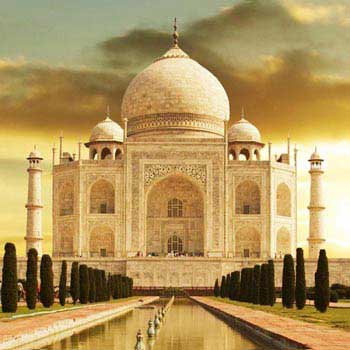 9D/8N
9D/8N
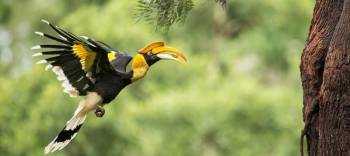 14D/13N
14D/13N
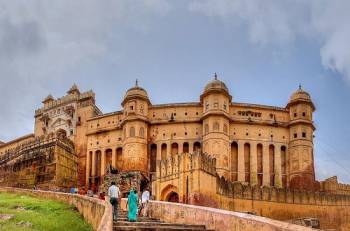 3D/2N
3D/2N
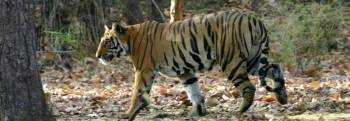 10D/9N
10D/9N
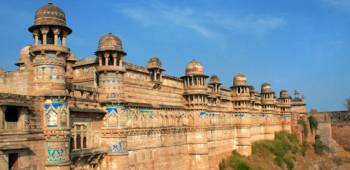 7D/6N
7D/6N
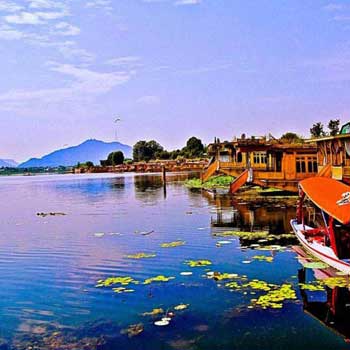 7D/6N
7D/6N
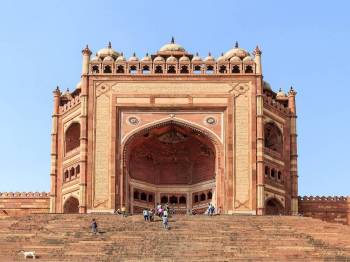 7D/6N
7D/6N
Amritsar Chandigarh Delhi Agra Family Pa..
New Delhi - Agra - Vrindavan - Mathura - Amritsar
 7D/6N
7D/6N
 7D/6N
7D/6N
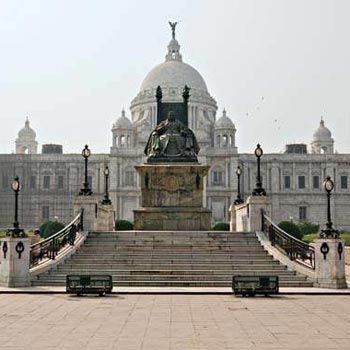 7D/6N
7D/6N
Golden Triangle - East India Tour
Kolkata - Puri - Imphal - Agartala - Dimapur
 7D/6N
7D/6N
 7D/6N
7D/6N
 7D/6N
7D/6N
 7D/6N
7D/6N
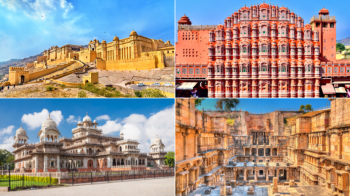 25D/24N
25D/24N
24 Nights - 25 Days Complete Rajasthan T..
New Delhi - Bharatpur - Chittorgarh - Jaipur - Jaisalmer - Jodhpur - Kota - Karauli..
 15D/14N
15D/14N
New Delhi - Ranthambore - Jaipur - Bharatpur - Fatehpur Sikri - Agra - Bandhavgarh ..
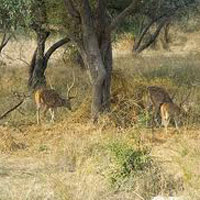 8D/7N
8D/7N
Golden Triangle Tour with Wildlife
New Delhi - Agra - Bharatpur - Jaipur - Pune
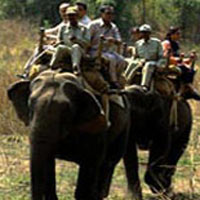 15D/14N
15D/14N
New Delhi - Jaipur - Bharatpur - Agra - Khajuraho - Kanha - Nagpur - Bandhavgarh - ..
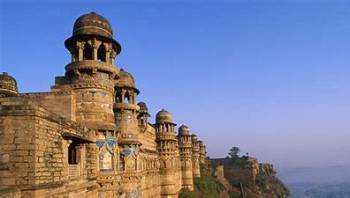 4D/3N
4D/3N
3 Night 4 Days Agra - Bharatpur - Gwalio..
Agra - Bharatpur - Gwalior - Jhansi
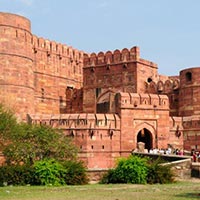 5D/4N
5D/4N
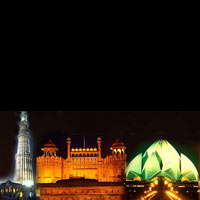 8D/7N
8D/7N
Golden Triangle Tour with Bharatpur - Sa..
New Delhi - Jaipur - Agra - Bharatpur - Sariska